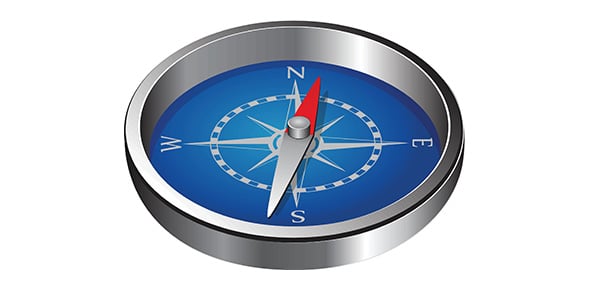What Do You Know About The International Regulation For Preventing Collisions At Sea?
-
Which of these agencies published the regulation?
-
United Nations Maritime Agency
-
International Maritime Organization
-
International Sailing Federation
-
European Maritime Agency
-
The water bodies are efficient means of transportation as well as other activities. As such, proper laws must be enforced to ensure normalcy at the sea. This explains the promulgation of certain regulations to forestall incidence of collision of water vessels and breakdown of law and order. Are you familiar with these regulations?

Quiz Preview
- 2.
When did the United States codified its common law rules for preventing collisions?
-
1878
-
1859
-
1849
-
1890
Correct Answer
A. 1878Explanation
In 1878, the United States codified its common law rules for preventing collisions. This means that they officially established and recorded these rules into written law. This would have provided clarity and consistency in how collisions were prevented and addressed, ensuring a safer environment for maritime activities.Rate this question:
-
- 3.
Which of these bodies provided the US version of the COLREGs?
-
Transport Canada
-
Transport Washington
-
US Coast Guard
-
US Maritime Department
Correct Answer
A. US Coast GuardExplanation
The US Coast Guard provided the US version of the COLREGs. The COLREGs, or International Regulations for Preventing Collisions at Sea, are a set of rules and regulations that govern the conduct of vessels at sea to prevent collisions. As the US is a maritime nation, it is necessary for them to have their own version of these regulations, and it is the responsibility of the US Coast Guard to provide and enforce them.Rate this question:
-
- 4.
Which of these agencies regulate Canadian vessels?
-
Transport Canada
-
Department of Maritime Security
-
Canadian Department of Maritime Security
-
International Maritime Agency
Correct Answer
A. Transport CanadaExplanation
Transport Canada is the correct answer because it is the agency responsible for regulating Canadian vessels. They ensure the safety and security of maritime transportation in Canada, as well as promote efficient and sustainable marine transportation systems. They establish and enforce regulations, standards, and policies to ensure compliance and protect the environment, public health, and safety. Transport Canada also provides support and services to the marine industry, including licensing and certification, inspections, and accident investigations.Rate this question:
-
- 5.
When were these regulations made and published globally?
-
1978
-
1985
-
1972
-
1987
Correct Answer
A. 1972 -
- 6.
When was the whistle signals added to the rules?
-
1869
-
1880
-
1867
-
1897
Correct Answer
A. 1867Explanation
In 1867, whistle signals were added to the rules.Rate this question:
-
- 7.
What country convened the first international maritime conference?
-
United Kingdom
-
Spain
-
United States
-
Germany
Correct Answer
A. United StatesExplanation
The correct answer is United States. The United States convened the first international maritime conference.Rate this question:
-
- 8.
Who authored 'The Rule of the Road'?
-
John Jordan
-
Craig Willaims
-
Thomas Gray
-
Asher Barnabas
Correct Answer
A. Thomas GrayExplanation
Thomas Gray authored 'The Rule of the Road'.Rate this question:
-
- 9.
When was coloured sidelights recommended for sailing vessels in United Kingdom?
-
1821
-
1858
-
1867
-
1849
Correct Answer
A. 1858Explanation
In 1858, coloured sidelights were recommended for sailing vessels in the United Kingdom. This recommendation was likely made to improve visibility and safety for vessels at sea. Coloured sidelights would have allowed other ships to easily identify the position and direction of a sailing vessel, reducing the risk of collisions and accidents. This measure was an important step in maritime regulations and helped to enhance navigation standards in the United Kingdom.Rate this question:
-
- 10.
When was the English maritime law adopted in United States?
-
1780
-
1950
-
1850
-
1878
Correct Answer
A. 1850Explanation
The English maritime law was adopted in the United States in 1850. This adoption occurred as a result of the growing importance of maritime trade and the need for a legal framework to govern it. The English maritime law provided guidelines and regulations for various aspects of maritime activities, such as shipping, navigation, and maritime contracts. Its adoption in 1850 helped establish a standardized legal system for maritime affairs in the United States, ensuring consistency and clarity in maritime law across the country.Rate this question:
-
Quiz Review Timeline (Updated): Mar 20, 2023 +
Our quizzes are rigorously reviewed, monitored and continuously updated by our expert board to maintain accuracy, relevance, and timeliness.
-
Current Version
-
Mar 20, 2023Quiz Edited by
ProProfs Editorial Team -
Dec 12, 2018Quiz Created by
AdewumiKoju
What Do You Know About The International Regulations For Preventing Collisions At Sea?
This quiz tests your knowledge of the International Regulations for Preventing Collisions at Sea, focusing on understanding and applying maritime laws to ensure safety and...
Questions:
10 |
Attempts:
132 |
Last updated:
Mar 20, 2023
|
121 Colregs Midterm Quiz B 70
This maritime navigation quiz assesses knowledge of the International Regulations for Preventing Collisions at Sea (COLREGs). It covers vessel light recognition, sound signals in...
Questions:
70 |
Attempts:
962 |
Last updated:
Mar 21, 2023
|
Road Rules 1dpa 70
Road rules 1dpa 70 explores maritime navigation and collision prevention. It tests knowledge on vessel priority, radar usage, and actions during specific maritime encounters,...
Questions:
70 |
Attempts:
1187 |
Last updated:
Mar 20, 2023
|
121 Colregs Midterm Quiz C 70
This quiz, titled '121 colregs midterm quiz c 70', assesses knowledge on maritime regulations, including vessel navigation lights, sound signals in restricted visibility, and...
Questions:
70 |
Attempts:
1068 |
Last updated:
Apr 16, 2024
|
Take The IMDG Exam Test To Pass The Quiz!
Are you planning to give the IMDG exam? Take the IMDG exam test to pass the quiz and evaluate how prepared you are for the exam. The International Maritime Dangerous Goods was...
Questions:
10 |
Attempts:
5392 |
Last updated:
May 29, 2023
|
Competence 16 (Deck)
This 'Competence 16 (Deck)' quiz focuses on critical maritime safety procedures and equipment. It assesses knowledge on life-saving techniques, emergency response actions, and the...
Questions:
10 |
Attempts:
1336 |
Last updated:
Mar 20, 2023
|
 Back to top
Back to top

















